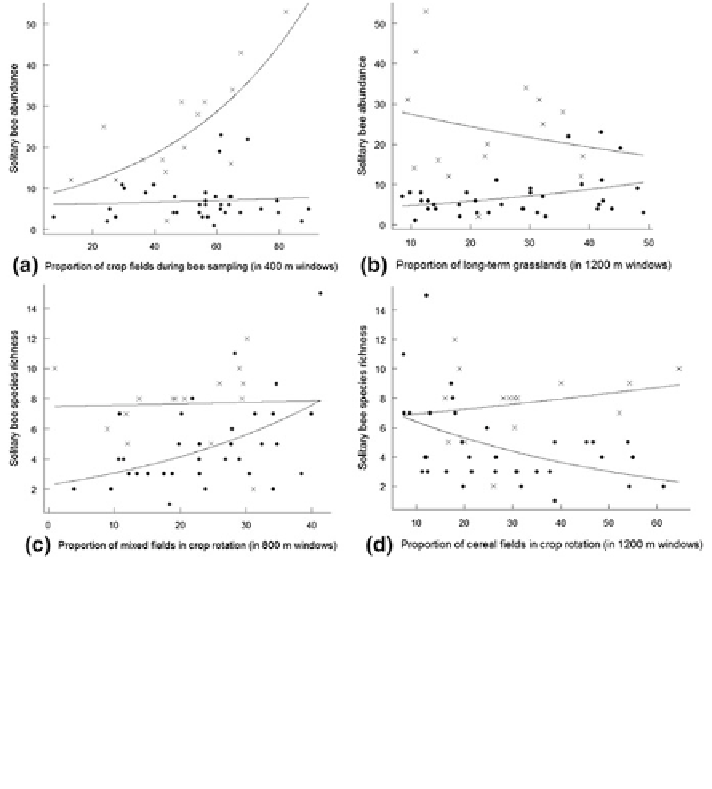Environmental Engineering Reference
In-Depth Information
Fig. 14.4 Relationship between a solitary bee abundance and proportion of non-flowering crop
fields during bee sampling (spring 2007) in 400 9 400 m windows; b solitary bee abundance and
proportion of long-term grasslands in 1,200 9 1,200 m windows; c solitary bee species richness
and proportion of ''mixed fields'' (''Mixed fields'' are fields where crop rotation included from
one to four years of temporary grassland during the period 2003-2007) in crop rotation in
800 9 800 m windows; d solitary bee species richness and proportion of ''cereal fields'' (''Cereal
fields'' are fields only sown with cereals (maize and wheat) during the period 2003-2007) in crop
rotation in 1,200 9 1,200 m windows. Predictions returned by the Poisson-family models are
shown by solid lines for significant relationships only (P B 0.05, test F). 9=oilseed rape field
margins. • = non-oilseed rape field margins
our results are in agreement with the hierarchy theory that predicts that spatial and
temporal scales are correlated. Phenomena occurring at coarse spatial scales are
related to slower processes than phenomena occurring at smaller spatial scales
(Allen et al.
1987
). The maintenance of populations, a slow process, may be due to
''large'' spatio-temporal patterns, while feeding behavior, a fast process, is related
to fine scale patterns (presence of a mass flowering crop in a given field). Our
study showed that examining the heterogeneity of the agricultural mosaic over a
whole crop rotation cycle was relevant to better understand the effects of agri-
culture on solitary bee communities. This approach allowed considering the
cumulative effects of field cover and it demonstrated that introducing less intensive
covers such as temporary grasslands in cereal rotations positively influences sol-
itary bee communities.

Search WWH ::

Custom Search